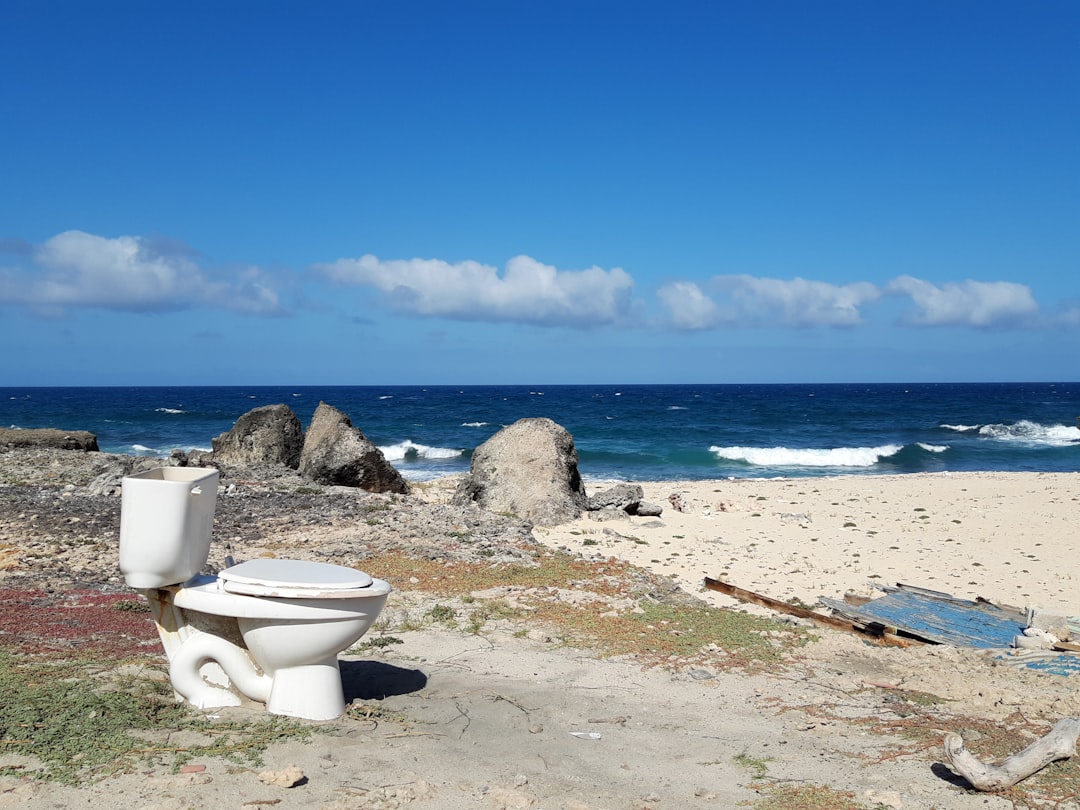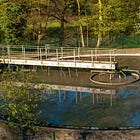This story is a sad story about waste.
Preamble:
It started when on a whim, I looked into the topic of recycled water use, and learned in my home town of New York, New School and a couple of fancy building complexes are using treated (knock on wood, fingers crossed) toilet water for … washing clothes.
I was disgusted with this unexpected news, and went on an exploratory and philosophical journey to understand where the wind is blowing (or where the water is flowing, rather).
Working with NSU [Natural Systems Utilities], the New School installed conservation fixtures and an on-site water treatment and reclaimed water system at The New University Center on 5th Avenue. The systems are designed to reduce water use by 74% and reduce discharge into the combined sewer by 89%. All wastewater (commonly referred to as “blackwater” [which stands for sewage waste]) is collected and treated at The New University Center including water from toilets, sinks, showers, laundry, etc. Stormwater is also included as a source of reclaimed water after being detained by the vegetated green roofs The University Center contains one of the largest in-building water recycling systems in New York City at 40,000 gallons per day (gpd). The University Center is one of the first buildings approved to reuse treated water for laundry [emphasis mine].
Are prospective students and their parents being told that during school tours? At nearly 20K-30K per semester, it sounds like a cruel prank.
The Battery City Park complex is also a “pioneer” of water reuse:
Sustainable urban development reaches new heights in downtown Manhattan with Battery Park. Battery Park City is a redevelopment area of 92 acres under the control of the NYC Battery Park City Authority (BPCA) of New York City.
Natural Systems Utilities (NSU) designed, built and currently operates the wastewater reuse systems and rainwater recycling systems within six Battery Park City Buildings.
These campus utilities systems have consistently achieved greater than 50% water consumption reduction and a greater than 60% reduction in wastewater discharge (compared to similar base residential buildings in NYC). These water recycling project savings are the direct result of wastewater reuse and water conservation. Battery Park City has been developed as a model for scaling water conservation and reuse projects in urban redevelopment and campus-scale settings.
NSU is a leader in water innovation with more than 38 years of experience planning, engineering, operating, and maintaining water recycling systems. We began providing innovative water solutions for businesses in 1984 and have grown to become one of the most prominent water reuse organizations in the nation. We are here to help you reimagine water [← Does the world need any more “visionaries” “reimagining” nature to squeeze more profit out of it? Short answer: No]
So here is my sense of it. The great resetters have come up with a set of clever talking points, and they are building a marketplace out of thin air. It is all wrapped in the rhetoric about climate change and sustainable blah—but this is all about making bank.
There is a nation-wide push to institute state legislation that would make it mandatory for large development projects to incorporate water reuse like the one I described above.
Here is an illuminating story describing trends. Water reuse in New York City:
Water reuse systems, in which rainwater, greywater and/or blackwater is captured on-site, treated to the appropriate standards and repurposed for non-potable end uses, offer New Yorkers the opportunity to optimize the city’s existing system, promote water conservation, and prepare for climate change. When done right, it is safe, cost-effective and energy-efficient. States around the country, including Minnesota, Washington, Oregon and California are in the process of creating new rules to promote these systems.
In many ways, New York is ripe for a proliferation of water reuse systems. Historical precedent in Battery Park City and on the New School campus have set the stage for what’s possible, while the NYC Department of Environmental Protection has created a generous grant for on-site water reuse systems in order to incentivize future development. New tools for designers and legislators have emerged in the past two years that take the guesswork out of the rule-creation and design process. In a water-rich city such as New York, water reuse should be looked to as a tool for providing resiliency, efficiency and innovation. Learn about the reasons for doing on-site water reuse, the successes of buildings that have paved the way, and the tools available for you to incorporate these systems into your next project.
A few thoughts
Is the theoretical premise bad? No, the theoretical premise is about reducing waste, it’s a noble aspiration, God knows that the amount of waste we create is obscene.
Do theoretical aspirations usually work out as advertised? Well, no again. In real life, no matter the aspiration, things often break. And in this case, the expectation is that every building complex would function as a fool-proof mini water treatment plant. But even the dedicated water treatment plants aren’t fool-proof! Can you imagine if something breaks in a non-obvious way and nobody notices for a while? Yikes.
The devil is always in the detail. How exactly are they going to clean the toilet waste? Are they really going to completely remove every toxic chemical and every pathogenic microbe? I am rather skeptical. For example, chlorine that is used for regular water treatment, toxic as it is for human health, allegedly does not kill the cysts of protozoan parasites. I swear, every time you look under the hood, a scream shows up.
All in all, using toilet water for laundry is disgusting, in my opinion, especially when it’s the only choice that the people get—that is, if they are even informed.
How does it work now?
Here it gets even sadder.
In the United States, up until 1972 when the Clean Water Act was passed, the waste was just dumped. Anything went, more or less.
Today, in theory, the waste gets treated before it is dumped. But it does not always work, as demonstrated by the video below.
(If you are not too squeamish, here is a video depicting New York City water treatment plant.)
So in practical terms, the water we receive from fresh water sources is still potentially full of waste, although it is also treated on the way in (knock on wood, fingers crossed).
Which leaves us with a giant philosophical question: If we don’t see crap and don’t think about it, does it disappear?
Note to readers: If you are in the position to do so, I encourage you to become a paid subscriber or donate. I love you in any case, but it helps A LOT. Thank you from my heart for your support!




And here is a campaign for converting toilet water to drinking water
https://engineering.stanford.edu/magazine/cleanest-drinking-water-recycled
What’s amazing to me is that 20+ years ago in my county when we built our house, it was not permissible to use grey water (laundry, sink, shower, bathtub) for irrigation, but now they want to force people to recycle and use BLACK water!